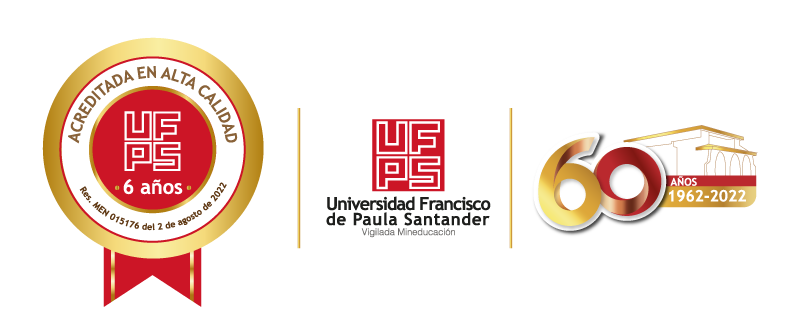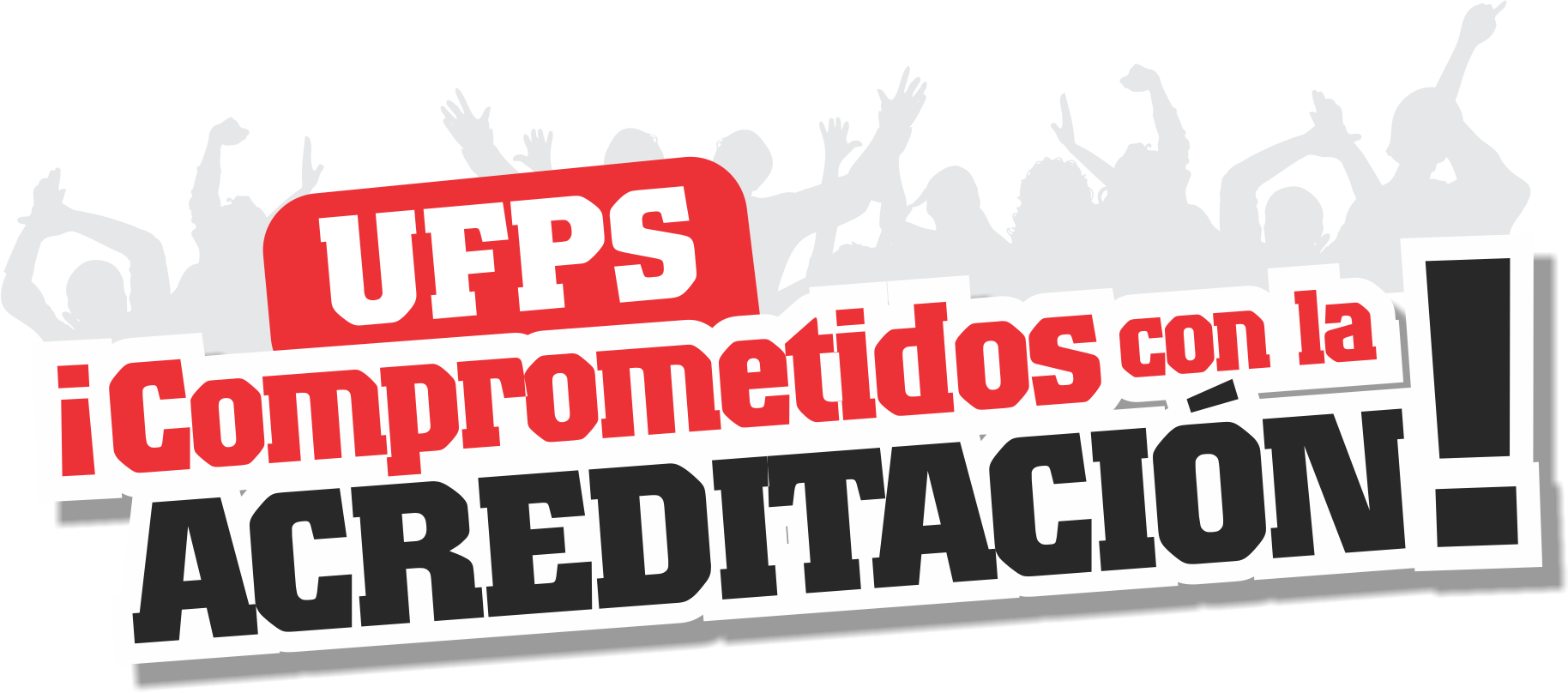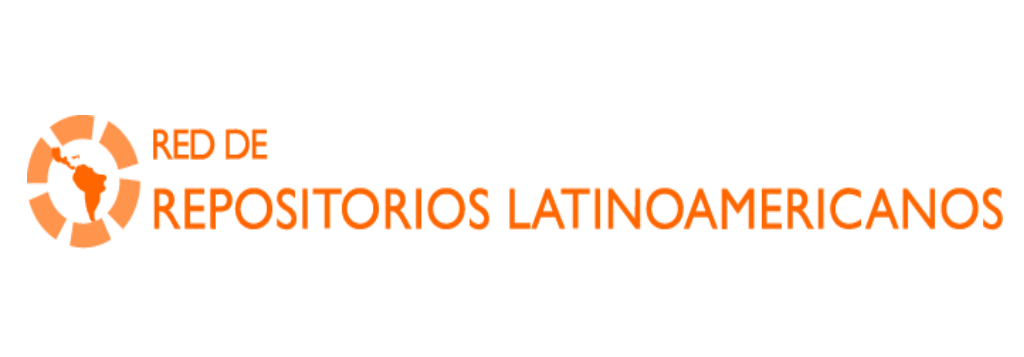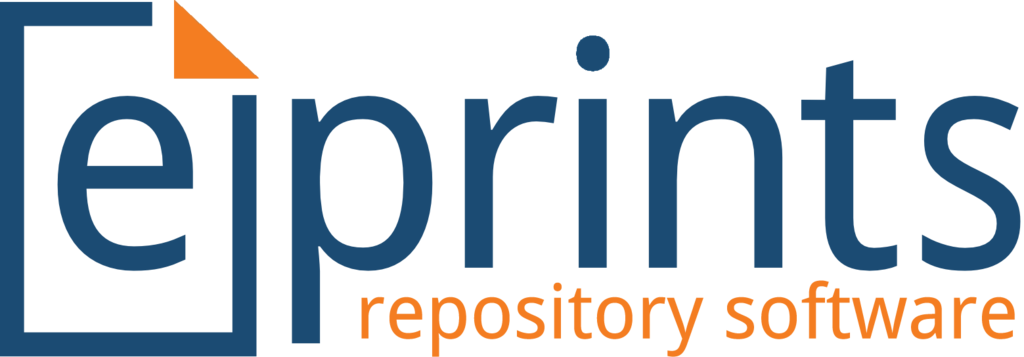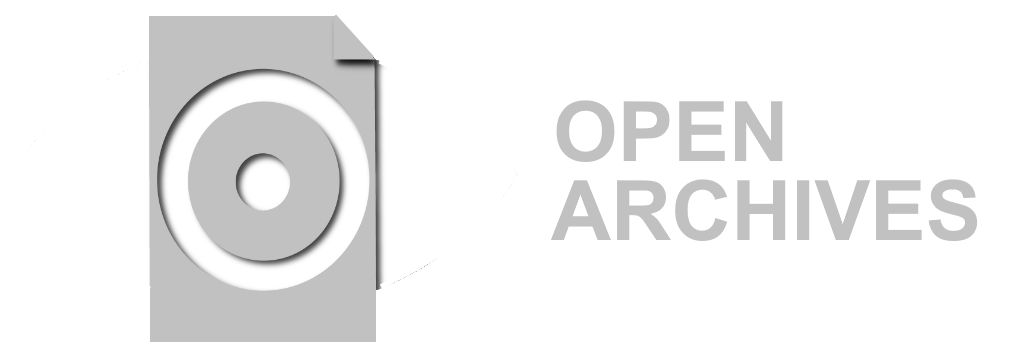| dc.rights.license | Atribución-NoComercial-CompartirIgual 4.0 Internacional (CC BY-NC-SA 4.0) | spa |
| dc.contributor.advisor | Hernández Suárez, César Augusto | |
| dc.contributor.advisor | Prada Nuñez, Raúl | |
| dc.contributor.author | Pumarejo García, Laura Daniela | |
| dc.contributor.author | Parada Carrillo, David Andree | |
| dc.date.accessioned | 2024-06-13T20:48:25Z | |
| dc.date.available | 2024-06-13T20:48:25Z | |
| dc.date.issued | 2022 | |
| dc.identifier.uri | https://repositorio.ufps.edu.co/handle/ufps/8750 | |
| dc.description.abstract | La investigación tuvo por objetivo describir los cambios en la comprensión de las demostraciones de las demostraciones antes y después del entrenamiento de auto explicación, para esto se utilizó el modelo de evaluación de la comprensión de las demostraciones de Mejía-Ramos et al. (2012) y el entrenamiento de auto explicación de hodds el at. (2014). el enfoque metodológico utilizado es la investigación mixta, con un diseño anidado, secuencial y de mayor ponderación en el enfoque cuantitativo correlacional ambos enfoques se relacionaron en la convergencia de la encuesta de satisfacción y las entrevistas en el estudio se encontró que los estudiantes mejoraron en los niveles de desempeño establecidos, además destacaron la importancia del cambio en las estrategias utilizadas para estudiar demostraciones matemáticas. | spa |
| dc.description.tableofcontents | Introducción 1. Problema 1.1. Título 1.2. Planteamiento del problema 1.3. Formulación del problema 1.4. Delimitación 1.4.1. Delimitación espacio - temporal 1.4.2. Delimitación conceptual 1.5. Justificación 1.6. Objetivos 1.6.1. Objetivo general 1.6.2. Objetivos específicos 2. Marco referencial 2.1. Estado del arte 2.1.1. Metodología estado del arte 2.1.2. Desarrollo 2.1.2.1. Investigaciones centradas en el cambio de presentación de contenido 2.1.2.2. Investigaciones centradas en el cambio del modelo de evaluación. 14 16 16 16 18 18 18 19 19 21 21 21 22 22 24 25 25 27 2.1.2.3. Modelos cognitivos que trabajan la comprensión de las demostraciones 28 2.1.2.4. Estudios que abordan la comprensión de la demostración en la educación superior 2.1.3. Conclusiones 2.2. Marco conceptual 2.2.1. Demostración 2.2.2. Comprensión de la demostración 2.2.3. Autoexplicación 2.3. Marco Teórico 2.3.1. Modelo de evaluación de la comprensión de las demostraciones 2.3.1.1. Evaluación de la comprensión local de las demostraciones 2.3.1.2. Evaluación de la comprensión holística de las demostraciones 2.3.2. Entrenamiento de autoexplicación 2.3.2.1. Implicaciones cognitivas 2.3.2.2. Caracterización del conocimiento 2.3.2.3. Recomendaciones para educadores de matemáticas 3. Metodología 3.1. La Investigación Mixta 3.2. Nivel De Investigación 3.3. Participantes y tipo de muestreo 3.4. Diseño De Investigación 30 35 36 36 37 39 41 41 44 46 49 49 49 50 55 55 56 58 58 3.5. Etapas Y Técnicas De Recolección De La Información 62 3.5.1. Primera etapa: Diseño cuantitativo 3.5.1.1. Primer momento - Prueba diagnóstica 3.5.1.2. Segundo momento - Intervención: Entrenamiento de autoexplicación 3.5.1.3. Tercer momento - Prueba de comprensión 3.5.1.4. Cuarto momento - Encuesta de satisfacción 3.5.2. Segunda etapa: Diseño Cualitativo 4. Resultados Y Hallazgos 4.1. Análisis De La Etapa Cuantitativa 4.1.1. Enfoque descriptivo 4.1.1.1. Prueba diagnóstica 4.1.1.2. Prueba de comprensión 4.1.1.3. Encuesta de satisfacción 4.1.2. Enfoque inferencial 4.1.2.1. Validación del sistema de hipótesis 4.2. Análisis De La Etapa Cualitativa 4.2.1. Antes del entrenamiento de autoexplicación 4.2.2. Durante el entrenamiento de autoexplicación 4.2.3. Después del entrenamiento de autoexplicación 5. Discusión 63 63 68 69 71 72 74 74 74 74 77 79 83 83 86 89 93 94 101 5.1. Comparativa entre los resultados de la prueba de diagnóstica y de comprensión 101 5.2. Comparativa entre la encuesta de satisfacción y las entrevistas 5.3. Factor diferencial y recomendaciones 6. Conclusiones 7. Referencias Bibliográficas Anexos 102 108 111 115 128 | |
| dc.format | application/pdf | |
| dc.format.extent | 151 páginas. ilustraciones,(Trabajo completo) 7.448 KB | |
| dc.publisher | Universidad Francisco de Paula Santander | spa |
| dc.rights | Derechos Reservados - Universidad Francisco de Paula Santander, 2022 | spa |
| dc.rights.uri | https://creativecommons.org/licenses/by-nc-sa/4.0/ | |
| dc.source | https://catalogobiblioteca.ufps.edu.co/descargas/tesis/1360117_1360123.pdf | |
| dc.title | Experiencias de los docentes de matemáticas en formación con el entrenamiento de auto explicación y su comprensión de las demostraciones matemáticas. | spa |
| dc.type | Trabajo de grado - Pregrado | |
| dcterms.references | Ainsworth, S., & Burcham, S. (2007). The impact of text coherence on learning by selfexplanation. Learning and Instruction, 17(3), 286–303. doi:10.1016/j.learninstruc.2007.02.004 | |
| dcterms.references | Alcock, L. (2009). e-Proofs: Student experience of online resources to aid understanding of mathematical proofs. In Proceedings of the 12th Conference on Research in Undergraduate Mathematics Education. Raleigh, NC: Special Interest Group of the Mathematical Association of America on Research in Undergraduate Mathematics Education. | |
| dcterms.references | Argueta Villamar, H. d. J., & Linares Altamirano, M. J. (s.f.). Método por Casos. Lógica. Método por casos. Recuperado el 8 de Marzo de 2022, de http://newton.matem.unam.mx/calculo1/Logica/l_logica10_d.html | |
| dcterms.references | Arnon, I., Cottrill, J., Dubinsky, E., Oktaç, A., Fuentes, S. R., Trigueros, M., & Weller, K. (2014). APOS theory: A framework for research and curriculum development in mathematics education. https://doi.org/10.1007/978-1-4614-7966-6 | |
| dcterms.references | Atkinson, R. K., Renkl, A. & Merrill, M. M. (2003). Transitioning From Studying Examples to Solving Problems: Effects of Self-Explanation Prompts and Fading Worked-Out Steps. Journal of Educational Psychology, 95(4), 774–783. doi: 10.1037/0022-0663.95.4.774 | |
| dcterms.references | Arias, F. G. (2012). El proyecto de investigación. Introducción a la metodología científica. 6ta. Fidias G. Arias Odón. | |
| dcterms.references | Balacheff, N. (1987). Processus de preuve et situations de validation (Proving Processes and Situations for Validation). Educational Studies in Mathematics, 18(2), 147-176. Retrieved January 18, 2021, Recuperado de: http://www.jstor.org/stable/3482413. | |
| dcterms.references | Belin, M., & Akar, G. K. (2020). The effect of quantitative reasoning on prospective mathematics teachers’ proof comprehension: The case of real numbers. The Journal of Mathematical Behavior, 57, 100757. doi:10.1016/j.jmathb.2020.100757 | |
| dcterms.references | Ben-Zvi, D. & Sfard, A. (2007). Ariadne's thread, Daedalus' wings, and the learner's autonomy. Education & Didactique, 1(3), 117-134. Recuperado de: https://journals.openedition.org/educationdidactique/241?lang=es# | |
| dcterms.references | Berthold, K., & Renkl, A. (2009). Instructional aids to support a conceptual understanding of multiple representations. Journal of Educational Psychology, 101(1), 70–87. doi:10.1037/a0013247 | |
| dcterms.references | Berthold, K., Röder, H., Knörzer, D., Kessler, W., y Renkl, A. (2011). The double-edged effects of explanation prompts. Computers in Human Behavior, 27(1), 69–75. doi:10.1016/j.chb.2010.05.025 | |
| dcterms.references | Betancort Alvarez & Arnaldos (s.f.). CH media de la Normal (sigma desconocida): decisión. Test de hipótesis, Medias. R ecuperado de: https://www.geogebra.org/m/arcxtz8q | |
| dcterms.references | Blanco Sarmiento, E. (2014). Intensive reading based on cross curricular topics : a strategy to foster students’ reading comprehension. Universidad de La Sabana. | |
| dcterms.references | Booth, J. L., Lange, K. E., Koedinger, K. R. & Newton, K. J. (2013). Using example problems to improve student learning in algebra: Differentiating between correct and incorrect examples. Learning and Instruction, 25, 24–34. doi:10.1016/j.learninstruc.2012.11.002 | |
| dcterms.references | Cavana, R. Y., Delahaye, B. L., & Sekaran, U. (2001). Applied business research:Qualitative and quantitative methods (Australian ed.). Milton, Queensland,Australia: J. Wiley. | |
| dcterms.references | Chi, M. T. H. (2000). Cognitive understanding levels. In A. E. Kazdin (Ed.), Encyclopedia of psychology (Vol. 2, pp. 172–175). American Psychological Association. | |
| dcterms.references | Chi, M. T. H., Bassok, M., Lewis, M., Reimann, P., & Glaser, R. (1989). Self-Explonations: How Students Study and Use Examples in Learning to Solve Problems. Cognitive Science, 13(2), 145-182. | |
| dcterms.references | Chi, M. T. H., de Leeuw, N., Chiu, M.-H., & LaVancher, C. (1994). Eliciting self-explanations improves understanding. Cognitive Science, 18(3), 439–477. | |
| dcterms.references | Creswell, J. W. & Plano Clark, V. L. (2001). Designing and Conducting Mixed Methods Research (V. L. Plano Clark & J. W. Creswell, Eds.). SAGE Publications. First edition | |
| dcterms.references | Creswell, J. W. & Plano Clark, V. L. (2011). Designing and Conducting Mixed Methods Research (V. L. Plano Clark & J. W. Creswell, Eds.). SAGE Publications. Second edition | |
| dcterms.references | Conradie, J. & Frith, J. (2000). Comprehension tests in mathematics. Educational Studies in Mathematics, 42(3), 225-235. Doi: https://doi.org/10.1023/A:1017502919000 | |
| dcterms.references | DeCaro, M. S., & Rittle-Johnson, B. (2012). Exploring mathematics problems prepares children to learn from instruction. Journal of Experimental Child Psychology, 113(4), 552–568. doi:10.1016/j.jecp.2012.06.009 | |
| dcterms.references | De Villiers, M. (2004). The role and function of quasi‐empirical methods in mathematics. Canadian Journal of Math, Science y Technology Education, 4(3), 397-418. | |
| dcterms.references | Dulock, H. L. (1993). Research Design: Descriptive Research. Journal of Pediatric Oncology Nursing, 10(4), 154–157. doi:10.1177/104345429301000406 | |
| dcterms.references | Durkin, K. & Rittle-Johnson, B. (2012). The effectiveness of using incorrect examples to support learning about decimal magnitude. Learning and Instruction, 22(3), 206–214. doi:10.1016/j.learninstruc.2011.11.001 | |
| dcterms.references | Erlingsson, C., & Brysiewicz, P. (2017). A hands-on guide to doing content analysis. African journal of emergency medicine, 7(3), 93-99. | |
| dcterms.references | Etikan, I., & Bala, K. (2017). Sampling and sampling methods. Biometrics & Biostatistics International Journal, 5(6), 00149. | |
| dcterms.references | Fonseca, B. A., & Chi, M. T. (2011). Instruction based on self-explanation. Handbook of research on learning and instruction, 296-321. | |
| dcterms.references | Garcia, L., & Quek, F. (1997, May/June). Qualitative research in information systems:Time to be subjective? International Conference on Information Systems and Qualitative Research,Philadelphia, PA. | |
| dcterms.references | Guirao-Goris,J.A; Olmedo Salas,A &Ferrer Ferrandis, E.(2008) El artículo de revisión. Revista Iberoamericana de Enfermería Comunitaria, 1, 1, 6. Recuperado de https://www.uv.es/joguigo/valencia/Recerca_files/el_articulo_de_revision.pdf | |
| dcterms.references | Godino, Juan D. & Recio, Angel M. (2001). Significados institucionales de la demostración. Implicaciones para la educación matemática. Enseñanza de las Ciencias, 19(3), pp. 405414. Recuperado de: https://core.ac.uk/download/pdf/38990678.pdf | |
| dcterms.references | Hanna, G. (1990). Some pedagogical aspects of proof. Interchange, 21(1), 6–13. doi:10.1007/bf01809605 | |
| dcterms.references | Harel, G. & Sowder, L. (1998). Students’ proof schemes: Results from exploratory studies. American Mathematical Society, 7, 234-283. Recuperado de: https://math.ucsd.edu/~harel/Students%27%20Proof%20Schemes.pdf | |
| dcterms.references | Harel, G. & Sowder, L. (2007) Toward Comprehensive Perspectives on the Learning and Teaching of Proof. In: Lester, F., Ed., Second Handbook of Research on Mathematics Education. Recuperado de: https://math.ucsd.edu/~harel/TowardComprehensivePerspective.pdf | |
| dcterms.references | Hernández-Sampieri, R., Fernández Collado, C., & Baptista Lucio, P. (2018). Metodología de la investigación (Vol. 4, pp. 310-386). México: McGraw-Hill Interamericana. | |
| dcterms.references | Hernández-Suarez, C. A. (2012). Caracterización de la actividad demostrativa en estudiantes de educación superior. Ecomatemático, 3(1), 36-43. Recuperado de: https://revistas.ufps.edu.co/index.php/ecomatematico/article/view/118/1546 | |
| dcterms.references | Hersh, R. (1993). Proving is convincing and explaining. Educational Studies in Mathematics, 24(4), 389-399. | |
| dcterms.references | Hodds, Alcock, & Inglis. (2014). Self-Explanation Training Improves Proof Comprehension. Journal for Research in Mathematics Education, 45(1), 62-101. doi:10.5951/jresematheduc.45.1.0062 | |
| dcterms.references | Klein, H., & Myers, M., (1999), “A Set of Principals for Conducting and Evaluating Interpretive Field Studies in Information Systems”, MIS Quarterly, Vol 23, No 1, pp 67-94. | |
| dcterms.references | Kolahdouz, F., Radmehr, F., & Alamolhodaei, H. (2019). Exploring students’ proof comprehension of the Cauchy Generalized Mean Value Theorem. Teaching Mathematics and Its Applications: An International Journal of the IMA, 1-20. doi:10.1093/teamat/hrz016 | |
| dcterms.references | Laboratorio de Economía de la Educación (LEE) de la Pontificia Universidad Javeriana. (2020). Un análisis sobre los programas de las ciencias de la educación. Recuperado de https://economiadelaeducacion.org/docs/ | |
| dcterms.references | Lavrakas, P. J. (2008). Encyclopedia of survey research methods. Sage publications. | |
| dcterms.references | Leavy, P. (2017). Research Design: Quantitative, Qualitative, Mixed Methods, Arts-Based, and Community-Based Participatory Research Approaches. Guilford Publications. | |
| dcterms.references | Legare, C. H., Gelman, S. A., & Wellman, H. M. (2010). Inconsistency With Prior Knowledge Triggers Children’s Causal Explanatory Reasoning. Child Development, 81(3), 929–944. doi:10.1111/j.1467-8624.2010.01443.x | |
| dcterms.references | Leron, U. (1983). Structuring mathematical proofs. American Mathematical Monthly, 90(3), 174184. | |
| dcterms.references | Leron, U. (1983). Structuring mathematical proofs. American Mathematical Monthly, 90(3), 174184. | |
| dcterms.references | Maher, C. A., & Sigley, R. (2020). Task-based interviews in mathematics education. Encyclopedia of mathematics education, 821-824. | |
| dcterms.references | Martínez, C. (2012). Estadística y muestreo-13ra Edición. Ecoe ediciones. | |
| dcterms.references | Matthews, P., & Rittle-Johnson, B. (2009). In pursuit of knowledge: Comparing selfexplanations, concepts, and procedures as pedagogical tools. Journal of Experimental Child Psychology, 104(1), 1–21. doi:10.1016/j.jecp.2008.08.004 | |
| dcterms.references | McEldoon, K. L., Durkin, K. L., & Rittle-Johnson, B. (2013). Is self explanation worth the time? A comparison to additional practice. British Journal of Educational Psychology, 83, 615632. doi: 10.1111/j.2044-8279.2012.02083.x | |
| dcterms.references | Mejia-Ramos, J. P., & Inglis, M. (2009). Argumentative and proving activities in mathematics education research. In F.-L. Lin, F.-J. Hsieh, G. Hanna, y M. de | |
| dcterms.references | Mejia-Ramos, J. P., Fuller, E., Weber, K., Rhoads, K., & Samkoff, A. (2012). An assessment model for proof comprehension in undergraduate mathematics. Educational Studies in Mathematics, 79(1), 3–18. doi:10.1007/s10649-011-9349-7. | |
| dcterms.references | Mejía-Ramos, J. P., Lew, K., de la Torre, J., & Weber, K. (2017). Developing and validating proof comprehension tests in undergraduate mathematics. Research in Mathematics Education, 19(2), 130–146. doi:10.1080/14794802.2017.1325776 | |
| dcterms.references | Mejía-Ramos, J. P., & Weber, K. (2020). Using task-based interviews to generate hypotheses about mathematical practice: mathematics education research on mathematicians’ use of examples in proof-related activities. ZDM. doi:10.1007/s11858-020-01170-w | |
| dcterms.references | Moore, R. C. (1994). Making the transition to formal proof. Educational Studies in Mathematics, 27(3), 249–266. doi:10.1007/bf01273731. | |
| dcterms.references | Nelsen, R. B., & Alsina, C. (2020). Demostraciones con encanto: un viaje por las matemáticas elegantes. Real Sociedad Matemática Española. | |
| dcterms.references | Neuhaus, S., & Rach, S. (2019). Proof comprehension of undergraduate students and the relation to individual characteristics. In Eleventh Congress of the European Society for Research in Mathematics Education (No. 31). Freudenthal Group; Freudenthal Institute; ERME. | |
| dcterms.references | Pfeiffer, K. (2011). Features and purposes of mathematical proofs in the view of novice students: observations from proof validation and evaluation performances (Doctoral dissertation, National University of Ireland, Galway). | |
| dcterms.references | Rach, S., & Heinze, A. (2017). The transition from school to university in mathematics: Which influence do school-related variables have. International Journal of Science and Mathematics Education, 15(7), 1343-1363. https://doi.org/10.1007/s10763-016-9744-8 | |
| dcterms.references | Rittle-Johnson, B. (2006). Promoting Transfer: Effects of Self-Explanation and Direct Instruction. Child Development, 77(1), 1-15. Recuperado de http://www.jstor.org/stable/3696686 | |
| dcterms.references | Rittle-Johnson, B., Loehr, A. M., & Durkin, K. (2017). Promoting self-explanation to improve mathematics learning: A meta-analysis and instructional design principles. ZDM, 49(4), 599–611. doi:10.1007/s11858-017-0834-z | |
| dcterms.references | Rittle-Johnson, B., & Schneider, M. (2015). Developing conceptual and procedural knowledge of mathematics. En R. C. Kadosh y A. Dowker (Eds.), Oxford library of psychology. The Oxford handbook of numerical cognition (p. 1118–1134). Oxford University Press. doi 10.1093/oxfordhb/9780199642342.013.014 | |
| dcterms.references | Rittle-Johnson, B., Schneider, M., & Star, J. (2015). Not a One-Way Street: Bidirectional Relations Between Procedural and Conceptual Knowledge of Mathematics. Educational Psychology Review, 27, 587-597. doi: 10.1007/s10648-015-9302-x | |
| dcterms.references | Rittle-Johnson, B., Siegler, R. S., & Alibali, M. W. (2001). Developing conceptual understanding and procedural skill in mathematics: An iterative process. Journal of Educational Psychology, 93(2), 346–362. doi: 10.1037/0022-0663.93.2.346. | |
| dcterms.references | Roy, S. (2014). Evaluating novel pedagogy in higher education: A case study of e-Proofs. (Doctoral Thesis). Loughborough University | |
| dcterms.references | Rowland, T. (2001). Generic proofs in number theory. In S. Campbell and R. Zazkis (Eds.), Learning and teaching number theory: Research in cognition and instruction. (pp. 157184). Westport, CT: Ablex Publishing. | |
| dcterms.references | Sánchez Turcios, R. A. (2015). t-Student: Usos y abusos. Revista mexicana de cardiología, 26(1), 59-61. | |
| dcterms.references | Sánchez Upegui, A. A. (2011). Manual de redacción académica e investigativa: cómo escribir, evaluar y publicar artículos. Fundación Universitaria Católica de Norte. Recuperado de: https://cife.edu.mx/recursos/wp-content/uploads/2019/01/manual-de-redaccion-mayo-052011.pdf | |
| dcterms.references | Schlagmüller, M., & Schneider, W. (2007). Würzburger Lesestrategie-Wissenstest für die Klassen 7-12. Ein Verfahren zur Erfassung metakognitiver Kompetenzen bei der Verarbeitung von Texten. [Wurzburg’s reading strategies test for classes 7–12. A Procedure to assess metacognitive competences while processing texts]. Göttingen: Hogrefe. | |
| dcterms.references | Schoenfeld, A. H. (1988). When good teaching leads to bad results: The disasters of well-taught mathematics courses. Educational psychologist, 23(2), 145-166. | |
| dcterms.references | Selden, J., & Selden, A. (1995). Unpacking the logic of mathematical statements. Educational Studies in Mathematics, 29(2), 123–151. doi:10.1007/bf01274210 | |
| dcterms.references | Selden, A., & Selden, J. (2003). Validations of Proofs Considered as Texts: Can Undergraduates Tell Whether an Argument Proves a Theorem? Journal for Research in Mathematics Education, 34(1), 4. doi:10.2307/30034698 | |
| dcterms.references | Selden, A., & Selden, J. (2017). A comparison of proof comprehension, proof construction, proof validation and proof evaluation. In Proceedings of the Conference on Didactics of Mathematics in Higher Education as a Scientific Discipline (pp. 339-345). | |
| dcterms.references | Siegler, R. S. (1995). How does change occur: A microgenetic study of number conservation. Cognitive Psychology, 28, 225–273. | |
| dcterms.references | Siegler, R., & Chen, Z. (2008). Differentiation and integration: guiding principles for analyzing cognitive change. Developmental science, 11 (4), 433-48. doi: 10.1111/j.14677687.2008.00689.x | |
| dcterms.references | Siegler, R. (2002). Microgenetic studies of self-explanation. In N. Granott y J. Parziale (Eds.), Microdevelopment: Transition Processes in Development and Learning (Cambridge Studies in Cognitive and Perceptual Development, pp. 31-58). Cambridge: Cambridge University Press. doi:10.1017/CBO9780511489709.002 | |
| dcterms.references | Silke Neuhaus & Stefanie Rach. Proof comprehension of undergraduate students and the relation to individual characteristics. Eleventh Congress of the European Society for Research in Mathematics Education, Utrecht University, Feb 2019, Utrecht, Netherlands. ⟨hal02398493⟩ | |
| dcterms.references | Sparks, J.R. (2012). Language/Discourse Comprehension and Understanding. In: Seel, N.M. (eds) Encyclopedia of the Sciences of Learning. Springer, Boston, MA. Recuperado de: https://doi.org/10.1007/978-1-4419-1428-6_1005 | |
| dcterms.references | Solow, D. (2013). How to read and do proofs: An introduction to mathematical thought processes (sixth edition). Hoboken, NJ: John Wiley | |
| dcterms.references | Star, J. (2005). Reconceptualizing Procedural Knowledge. Journal for Research in Mathematics Education, 36(5), 404-411. doi:10.2307/30034943 | |
| dcterms.references | Star, J. (2007). Foregrounding Procedural Knowledge. Journal for Research in Mathematics Education, 38(2), 132-135. Recuperado de: http://www.jstor.org/stable/30034953 | |
| dcterms.references | Strauss, A., & Corbin, J. M. (1990). Basics of qualitative research: Grounded theory procedures and techniques. Sage Publications, Inc. | |
| dcterms.references | Tavakoli, H. (2012). A dictionary of research methodology and statistics in applied linguistics. Rahnama press. | |
| dcterms.references | Thompson, P. W. (1994). The development of the concept of speed and its relationship to concepts of rate. In G. Vergnaud, G. Harel, y J. Coufrey (Eds.). The development of multiplicative reasoning in the learning of mathematics (pp. 179–234). SUNY Press. | |
| dcterms.references | Villiers (Eds.), Proceedings of the ICMI Study 19 conference: Proof and proving in mathematics education, Vol. 2 Taipei, Taiwan, (pp. 88–93). | |
| dcterms.references | Walsham, G., (1995), “Interpretive Case Studies in IS Research: Nature and Method”, European Journal ofInformation Systems, Vol 4. No 2, pp.74-81. | |
| dcterms.references | Weber, K. (2001). Educational Studies in Mathematics, 48(1), 101–119. doi:10.1023/a:1015535614355. | |
| dcterms.references | Weber, K. (2008). How Mathematicians Determine If an Argument Is a Valid Proof. Journal for Research in Mathematics Education, 39(4), 431-459. Retrieved January 17, 2021, from http://www.jstor.org/stable/40539306 | |
| dcterms.references | Weber, K., & Mejia-Ramos, J. P. (2011). Why and how mathematicians read proofs: an exploratory study. Educational Studies in Mathematics, 76(3), 329–344. doi:10.1007/s10649-010-9292-z | |
| dcterms.references | Weber, K. (2012). Mathematicians’ perspectives on their pedagogical practice with respect to proof. International Journal of Mathematical Education in Science and Technology, 43(4), 463–482. doi:10.1080/0020739x.2011.622803 | |
| dcterms.references | Weber, K. (2015). Effective Proof Reading Strategies for Comprehending Mathematical Proofs. International Journal of Research in Undergraduate Mathematics Education, 1(3), 289314. doi:10.1007/s40753-015-0011-0 | |
| dcterms.references | Weber, K., Inglis, M., & Mejia-Ramos, J. P. (2014). How Mathematicians Obtain Conviction: Implications for Mathematics Instruction and Research on Epistemic Cognition. Educational Psychologist, 49(1), 36–58. doi:10.1080/00461520.2013.865527 | |
| dcterms.references | Wong, R. M. F., Lawson, M. J., y Keeves, J. (2002). The effects of self-explanation training on students' problem solving in high-school mathematics. Learning and Instruction, 12(2), 233–262. doi: 10.1016/S0959-4752(01)00027-5 | |
| dcterms.references | Yang, K.-L., & Lin, F.-L. (2007). A model of reading comprehension of geometry proof. Educational Studies in Mathematics, 67(1), 59–76. doi:10.1007/s10649-007-9080-6 | |
| dcterms.references | Zedeck, S. (2014). APA Dictionary of Statistics and Research Methods (S. Zedeck, Ed.). American Psychological Association. | |
| dc.description.notes | Archivo Medios Electrónicos | spa |
| dc.description.degreelevel | Pregrado | |
| dc.description.degreename | Licenciado(a) en Matemáticas | spa |
| dc.identifier.instname | instname:Universidad Francisco de Paula Santander | |
| dc.identifier.reponame | reponame:Repositorio Digital UFPS | |
| dc.identifier.repourl | repourl:https://repositorio.ufps.edu.co/ | |
| dc.publisher.faculty | Facultad de Educación, Artes y Humanidades | spa |
| dc.publisher.place | San José de Cúcuta | spa |
| dc.publisher.program | Licenciatura en Matemáticas | spa |
| dc.rights.accessrights | info:eu-repo/semantics/openAccess | |
| dc.subject.lemb | Comprensión de la demostración | spa |
| dc.subject.lemb | Autoexplicación | spa |
| dc.subject.lemb | Modelo de evaluación | spa |
| dc.subject.lemb | Modelo de evaluación | spa |
| dc.subject.lemb | Demostraciones matemáticas | spa |
| dc.subject.proposal | Modelo de evaluación | spa |
| dc.subject.proposal | Docentes | spa |
| dc.subject.proposal | Estrategias | spa |
| dc.type.coar | http://purl.org/coar/resource_type/c_7a1f | |
| dc.type.coarversion | http://purl.org/coar/version/c_ab4af688f83e57aa | |
| dc.type.content | Text | |
| dc.type.driver | info:eu-repo/semantics/bachelorThesis | |
| dc.type.redcol | http://purl.org/redcol/resource_type/TP | |
| dc.type.version | info:eu-repo/semantics/acceptedVersion | |
| dc.identifier.signature | TLM V00025/2022 | spa |
| dc.contributor.jury | Mendoza Lizcano, Sonia Maritza | |
| dc.contributor.jury | Ramírez Leal, Pastor | |
| dc.contributor.jury | Parada Rincón, Luz Elena | |
| dc.rights.coar | http://purl.org/coar/access_right/c_abf2 | |
